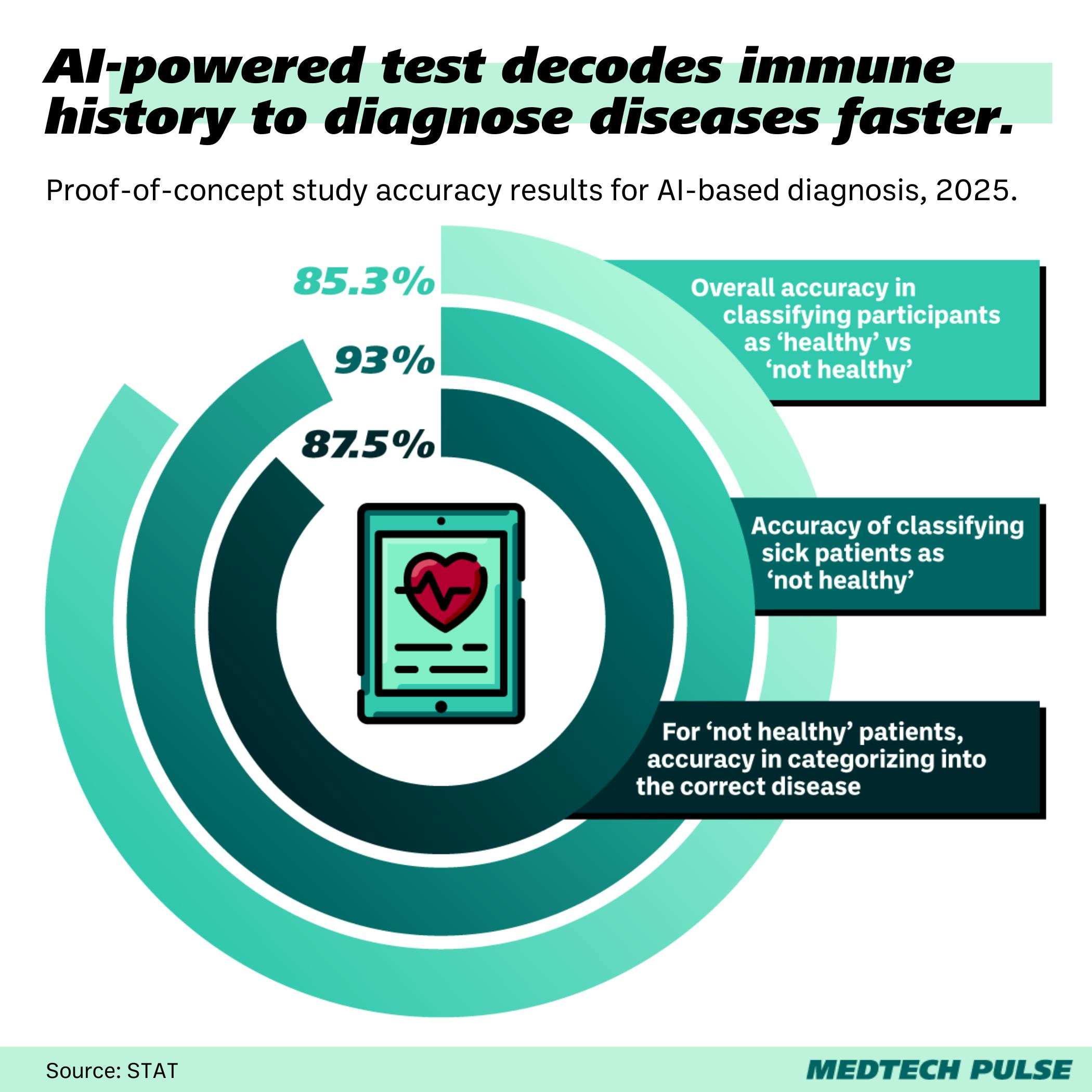New machine learning tool unravels immunology
Do you remember every time you’ve been sick? Probably not. But your body does.
Your immune system largely defends you by remembering how to fight intruders it has encountered before. This living memory largely exists in the form of B and T cells.
So, how can we better understand the body’s built-in disease record to help understand, diagnose, and treat infections and autoimmune diseases? Researchers are getting closer to figuring that out.
The story: In a newly published proof-of-concept study, a team of researchers unveiled a way to use machine learning to make better sense of this internal log of disease.
- The tool was used to detect and confirm diagnoses of Covid-19, HIV, influenza, lupus, and type 1 diabetes.
- Down the line, the learnings from this study may eventually inform better and faster ways to diagnose and monitor autoimmune diseases.
Reading into immunity: The tool works by analyzing a person’s immune cell receptors, which are surface proteins that help B and T cells recognize disease.
- This approach to disease detection isn’t completely new. Antibody blood tests, for instance, are a common way to check for previous infection—or determine whether you need a booster vaccine.
- However, what is new is the focus on both B and T cell receptors, the breadth of the study, and the focus on the genes driving the immune response.
- The researchers sequenced immune cells from just under 600 participants to create training data for the machine learning tool.
- The resulting tool had fairly high accuracy in distinguishing between healthy and sick patients as well as differentiating between diseases.

Implications for autoimmune disease: Currently, the tool can’t be used to diagnose diseases other than those covered in the data it is trained on. However, it may be the first step to developing diagnostic tools that may make autoimmune disease diagnosis a less painstaking, lengthy journey for patients.
- Currently, it takes an average of four years of symptoms and provider visits for a patient to receive an autoimmune disease diagnosis and start their treatment. Creating a tool that can more swiftly identify immunological markers of such diseases could make a difference in cutting that time down.
- Of course, this tool is still far from undertaking that challenging task. Experts pointed out to STAT that part of why this tool performed so well is that it was “taking a multiple choice test.” In other words, while lupus is a very complex disease that presents differently in different people, the test might have done a good job of identifying it in this proof-of-concept sample by process of elimination.